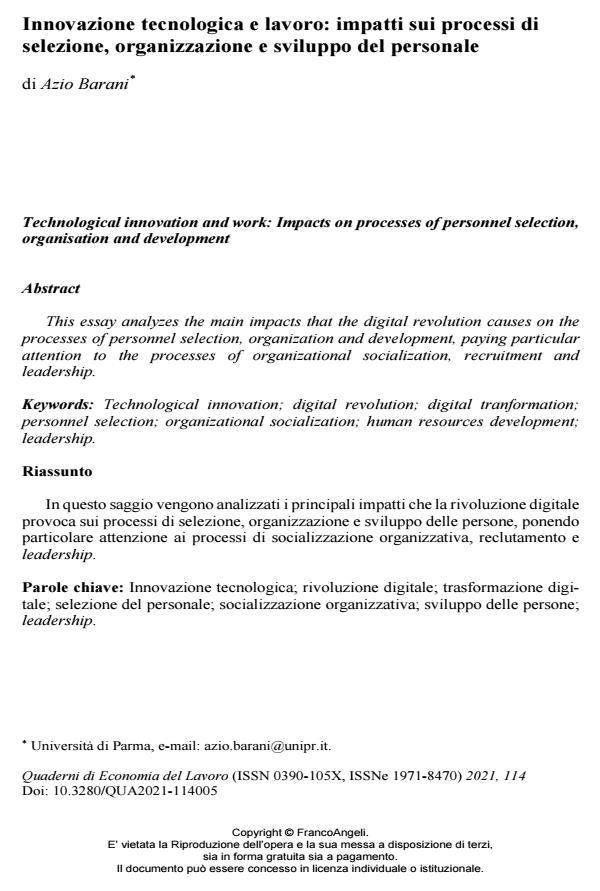Innovazione tecnologica e lavoro: impatti sui processi di selezione, organizzazione e sviluppo del personale
Titolo Rivista QUADERNI DI ECONOMIA DEL LAVORO
Autori/Curatori Azio Barani
Anno di pubblicazione 2023 Fascicolo 2021/114
Lingua Italiano Numero pagine 42 P. 129-170 Dimensione file 416 KB
DOI 10.3280/QUA2021-114005
Il DOI è il codice a barre della proprietà intellettuale: per saperne di più
clicca qui
Qui sotto puoi vedere in anteprima la prima pagina di questo articolo.
Se questo articolo ti interessa, lo puoi acquistare (e scaricare in formato pdf) seguendo le facili indicazioni per acquistare il download credit. Acquista Download Credits per scaricare questo Articolo in formato PDF

FrancoAngeli è membro della Publishers International Linking Association, Inc (PILA)associazione indipendente e non profit per facilitare (attraverso i servizi tecnologici implementati da CrossRef.org) l’accesso degli studiosi ai contenuti digitali nelle pubblicazioni professionali e scientifiche
In questo saggio vengono analizzati i principali impatti che la rivoluzione digi-tale provoca sui processi di selezione, organizzazione e sviluppo delle persone, po-nendo particolare attenzione ai processi di socializzazione organizzativa, recluta-mento e leadership.
Parole chiave:Innovazione tecnologica; rivoluzione digitale; trasformazione digi-tale; selezione del personale; socializzazione organizzativa; sviluppo delle persone; leadership.
Azio Barani, Innovazione tecnologica e lavoro: impatti sui processi di selezione, organizzazione e sviluppo del personale in "QUADERNI DI ECONOMIA DEL LAVORO" 114/2021, pp 129-170, DOI: 10.3280/QUA2021-114005